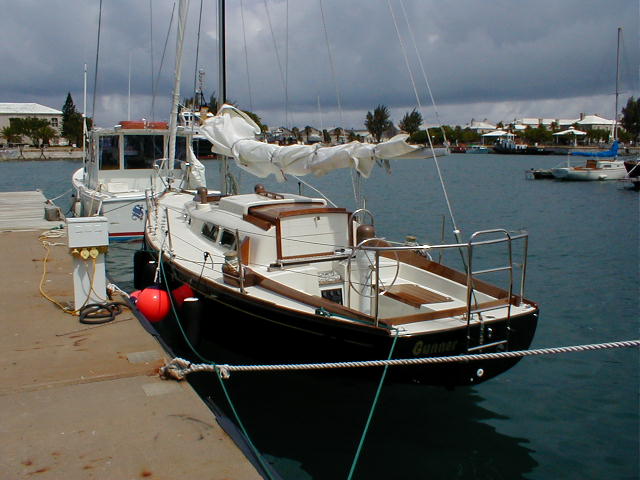

Above is a picture of one of the many thousands of boats in the united states. Now, while a boat hull can be made from anything from wood to steel to ferrocement, this particular boat, like half of all the boats in the United States, has a hull made of fiberglass.
Why Fiberglass?
For a small boat, fiberglass is often a good choice for the hull, and one of the cheapest choices as well. Consequently, many fiberglass hulled boats are in use now.
The Hull, in case some of you don't know, is the outer portion of the ship, that comes into contact with the water. Whenever a boat is called a fiberglass boat, it usually means that the boat hull is made out of fiberglass. While many other things inside are made of fiberglass, the hull is the most important designator of a "fiberglass" boat.
In a small boat, the weight/strength relationship of the material used to make the hull is very important, especially if the boat user wants the boat to travel at high speeds. In larger boats this is not so much of an issue, since such boats are not usually sailboats. And due to their greater weight and size the hull must be thicker anyway.
Making a fiberglass hull is not a very hard job to do, even for a person working by himself. Companies that produce fiberglass boat hulls have an easier time of it, as they may make the mold for a fiberglass boat hull one time, and then mold the fiberglass composite around it. Then the mold is removed or the composite hull is removed (depending upon the tequnique used) and the mold may be used again. A metal or wooden boat hull must be constructed on an assembly line if it is to be mass produced. While this is a very efficient means of construction, it is much more expensive to build an assembly line than a single block of material to use as a mold.
A large manufacturer with sufficient resources to construct an assembly line may find that it is more efficient in terms of cost versus quality and time of production to make aluminum boats hulls using an assembly line method. For the small manufacturer of boats it will remain cheaper to use fiberglass molds.
Alternatives to Fiberglass
At one time, all boats sold in the United States were made of wood. Wood! Isn't it amazing how far we have come? When wooden boats were being mass produced, they were both expensive and maintenence intensive. To seal a wooden boat, the hull was caulked. This prevented water from seeping in between the wood, but the hulls had to be recaulked every 5 to 10 years. And, of course, wood will rot. When fiberglass boats first came to replace them, they instantly began to dominate the industry.
From our standards the older wooden boats were not very good at all, but they were made with the best construction techniques and materials available at the time. For the time, they were quite good. With our current construction tequniques, some wooden boats sail as well as or better than composite or metal boats. However, to keep a wooden boat in good condition is still a time consuming task. On a metal or fiberglass boat, if a small leak develops somewhere, it will stay a small leak for quite a while. But on a wooden boat, such a leak can expand within a few days, becoming a serious problem.
A more obvious alternative to fiberglass is metal, normally either aluminum alloy or steel. For smaller craft, aluminum can be a good alternative. Aluminum alloy is strong and lightweight. Steel, while heavy, is very useful for large craft or small craft where speed is not important but hull integrity is.
Here's a list of some things to know!
Things to Know About Fiberglass Composites
Here's a listing of some of the properties of Fiberglass..
More Advantages of Fiberglass in Boats
